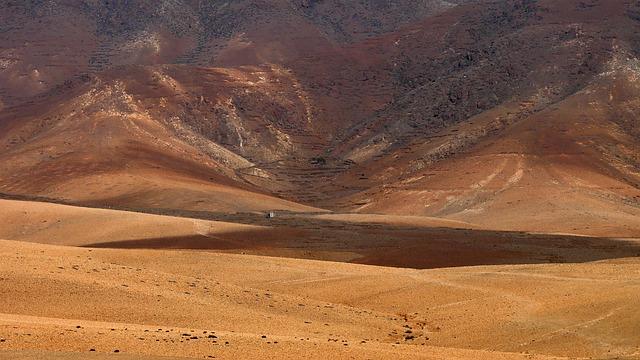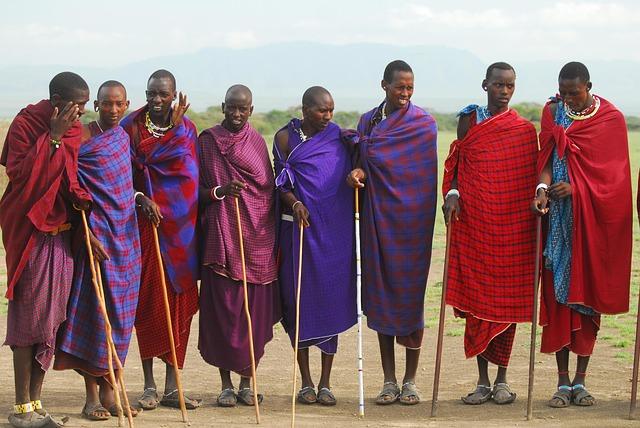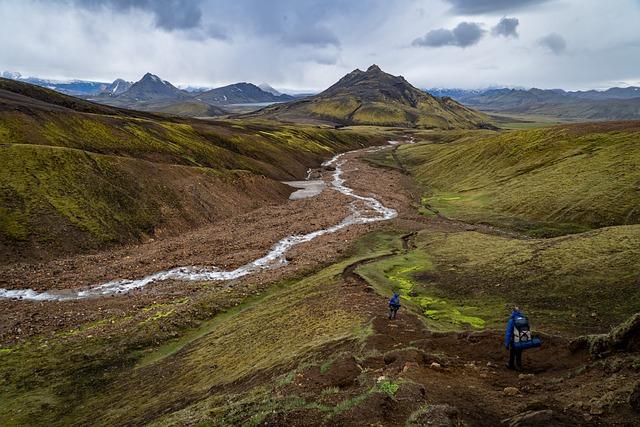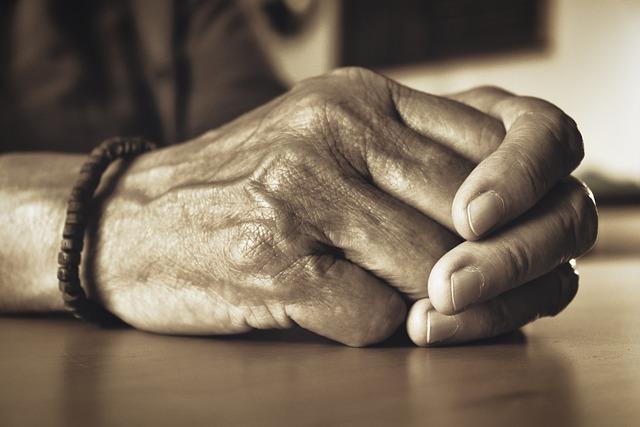Within the middle of east africa, the Maasai group is status company towards a debatable highway undertaking that threatens their ancestral lands. Fresh protests have erupted as indigenous teams name consideration to the continued fight towards pressured evictions related to tourism building. This example now not best underscores the complexities of contemporary conservation efforts but in addition highlights the pressing want for equitable land rights.The blockade of a key vacationer highway illustrates the maasai’s willpower to offer protection to their heritage and way of living from encroachment.As tensions upward thrust and negotiations falter, the destiny of each the group and the encircling habitat hangs within the stability. On this article, we delve into the unfolding occasions surrounding the Maasai’s combat towards displacement, the results for native ecosystems, and the global reaction to this urgent factor.
Maasai Group Stands Company In opposition to Land Evictions in Vacationer Roadblock Protest
Individuals of the Maasai group have made headlines by means of staging a protest towards the continued pressured evictions from their ancestral lands in a dramatic war of words with the tourism trade.This motion, involving the blockade of key vacationer routes, highlights the group’s fight to protect their rights towards what they see as government-sanctioned land grabs that threaten their cultural heritage and livelihoods. the Maasai, identified for his or her conventional practices and deep connection to the land, are resolute to withstand those evictions, which they view as an infringement on their identification and way of living.
The protests, which drew essential consideration from each native and global media, come with a big selection of actions designed to lift consciousness in their plight.Group leaders have emphasised the will to offer protection to their land from being remodeled into luxurious estates for rich vacationers. key facets in their message come with:
- land Rights: Advocating for the popularity and coverage in their ancestral lands.
- Cultural Integrity: Conserving their cultural practices towards commercialization.
- Sustainable Tourism: Selling a fashion of tourism that respects and preserves native communities.
| Factor | Have an effect on |
|---|---|
| Compelled Evictions | Lack of ancestral land and displacement of households |
| Commercialization | risk to conventional techniques of lifestyles and cultural practices |
| Loss of Illustration | Exclusion from decision-making referring to land use |
The Maasai’s dedication to status company towards those evictions is strengthened by means of their robust group ties and backbone to say their rights.As the sector watches, the result of this protest might function a essential turning level within the ongoing discussions round land rights and tourism building in Kenya. This example underscores the wider context of indigenous rights, environmental conservation, and the sustainability of tourism projects that truly contain native populations in the advantages whilst respecting their traditions.
The Have an effect on of Tourism Construction on Indigenous Land Rights in Tanzania

The new protests by means of the Maasai group towards the development of a vacationer highway spotlight the advanced interaction between tourism building and indigenous land rights in Tanzania. The federal government’s push to fortify tourism infrastructure steadily comes at an important value to native communities, particularly the ones whose ancestral lands are at stake. The Maasai, who’ve historically trusted their land for grazing farm animals and maintaining their cultural practices, at the moment are confronted with pressured evictions that threaten their way of living. This situation raises critical questions concerning the stability between financial enlargement via tourism and the wish to appreciate and uphold indigenous land rights.
Because the Maasai block the vacationer highway, it underscores the wider fight for popularity and justice confronted by means of indigenous populations around the globe.Key elements influencing this war come with:
- Govt insurance policies: Incessantly sufficient favoring tourism investments over group rights.
- Land tenure problems: Many Maasai aren’t officially identified as landowners, making it more uncomplicated for government to hold out evictions.
- Environmental issues: The have an effect on of tourism on native ecosystems can exacerbate present vulnerabilities for indigenous communities.
| Issue | Have an effect on on Indigenous Rights |
|---|---|
| Financial Expansion | Frequently prioritized over native wishes |
| Felony Framework | Inadequately protects indigenous land claims |
| Tourism Construction | Ends up in land dispossession and cultural erosion |
working out the Felony Framework Surrounding Ancestral Land and Compelled Evictions

The fight for ancestral land by means of indigenous communities, such because the Maasai other people, highlights important prison complexities. Land rights are most often ruled by means of a mixture of nationwide, regional, and global regulations. On the nationwide stage, regulation continuously sufficient acknowledges the rights of indigenous peoples to their ancestral lands; regardless that, those rights can continuously be lost sight of or undermined by means of authorities insurance policies prioritizing financial building and tourism. The United Countries declaration at the Rights of Indigenous Peoples outlines a very powerful protections for such communities, advocating for his or her proper to self-determination and the preservation in their cultural heritage. Although, enforcement of those rights continuously sufficient falls quick, necessitating a powerful working out of each home prison frameworks and international human rights standards.
The phenomenon of pressured evictions raises severe prison and moral issues, specifically when established settlements are uprooted to make approach for industrial initiatives comparable to tourism infrastructure.To make clear this, imagine the next key facets of the prison framework surrounding pressured evictions:
| Facet | Main points |
|---|---|
| Felony Justification | Governments steadily cite land building regulations as justification for evictions. |
| Global Requirements | Compelled evictions will have to be performed underneath strict human rights duties. |
| Group Rights | Communities have the proper to session and repayment prior to any eviction. |
The inconsistency in prison protections throughout other jurisdictions continuously sufficient ends up in conflicts between native communities and state actors, particularly in areas the place tourism is closely promoted. the complexities surrounding land rights and the legalities of pressured evictions require thorough consideration, making sure that the voices of indigenous peoples aren’t best heard however revered throughout the prison equipment that governs them.
Voices from the Floor: Tales of the Maasai and Their Battle for Justice

The Maasai group has discovered itself on the heart of a rising war over their ancestral land, the place a mix of cultural heritage and sustainability faces the pressures of contemporary building. Fresh protests have noticed elders and early life alike mobilizing to dam a significant vacationer highway, signaling their fierce opposition to pressured evictions that threaten their way of living. This act of defiance now not best highlights their willpower to maintain their land,but in addition raises consciousness concerning the broader problems with land rights and environmental justice. The Maasai other people, custodians of those lands for generations, argue that their displacement is a contravention of each their heritage and their basic human rights, calling for reparative justice and popularity in their claims.
On this fight, the Maasai show off an unwavering dedication to protect their rights towards governmental and company pursuits that prioritize benefit over other people. Their narrative is steeped in a historical past of resilience, as they proportion poignant tales of previous injustices, genealogies steeped within the land, and futures they envision along colourful biodiversity. With every protest and exhibition, the Maasai aren’t simply combating for his or her land; they’re setting up a conversation about cultural preservation, ecological stewardship, and collective identification that transcends borders. Thru those voices emerging from the bottom, the sector watches and learns that the combat for justice is woven into the vrey material of humanity’s dating with the land.
Pathways to Answer: Suggestions for Sustainable Answers to Land Disputes

To successfully cope with the escalating tensions coming up from land disputes, it’s certainly a very powerful to have interaction all stakeholders in a collaborative discussion rooted in transparency and mutual appreciate. This manner can foster working out and construct accept as true with, in the end resulting in extra sustainable results. Key suggestions come with:
- Group Engagement: Contain native communities in decision-making processes referring to land use and building initiatives.
- Felony Framework Evaluation: Assess and, the place important, amend present land tenure regulations to raised mirror indigenous rights and offer protection to ancestral lands.
- Mediation and Battle answer: Identify unbiased mediation our bodies to facilitate discussions and get to the bottom of disputes prior to they escalate into conflicts.
- Schooling and Consciousness Campaigns: Begin techniques that train each native populations and stakeholders about land rights and the significance of maintaining cultural heritage.
Moreover, enforcing restorative justice mechanisms can considerably assist in repairing relationships strained by means of conflicts over land. A structured manner would contain acknowledging previous grievances and making sure duty amongst events concerned.Attention must even be given to:
| Motion Merchandise | Anticipated End result |
|---|---|
| Identify Land Trusts | Protected land for indigenous communities whilst selling sustainable tourism. |
| Put in force Sustainable Practices | Reduce environmental have an effect on and foster regenerative land use. |
Combining those methods can assist create a framework that now not best resolves present problems but in addition prevents long term disputes, selling coexistence and appreciate for the wealthy cultural narratives tied to those ancestral lands.
the Position of Global toughen in Protective Indigenous Rights Amid Construction Pressures

The combat for indigenous rights steadily pits conventional communities towards robust forces of building,making global toughen a very powerful of their struggles. When organizations and activists from world wide enlarge the voices of marginalized teams, they bring about crucial consideration to the pressing problems regarding territorial rights and cultural preservation. The Maasai group’s contemporary protest towards the vacationer highway exemplifies the intersection of native resistance and international advocacy, highlighting a number of key elements:
- Consciousness Elevating: Global entities can make clear the plight of indigenous populations, drawing public and media consideration to the injustices they face.
- Felony Advocacy: Enhance from international prison networks can empower communities to combat for his or her rights in native and global courts.
- monetary Assets: Investment from global organizations can give crucial assets for communities, enabling them to mount efficient resistance.
- Team spirit motion: Exterior power on governments and firms can result in negotiations that honor the rights and desires of indigenous other people.
Additionally, collaborative projects between native activists and global organizations may end up in the status quo of protecting measures and coverage adjustments.For instance, many indigenous teams have effectively lobbied for popularity in nationwide constitutions and global agreements. right here’s a snapshot of latest achievements in supporting indigenous rights:
| Yr | Fulfillment | Have an effect on |
|---|---|---|
| 2019 | UN Declaration at the Rights of Indigenous Peoples upheld | Higher international consciousness and advocacy for indigenous rights |
| 2021 | Established order of Indigenous Empowerment Fund | Monetary toughen for land rights and cultural initiatives |
| 2022 | a hit courtroom case towards land encroachment | Set precedent for long term prison battles |
The Conclusion
the continued protests by means of the Maasai group towards the pressured eviction from their ancestral lands underscore a essential intersection of environmental conservation and indigenous rights. As tensions escalate, the placement invitations broader discussions concerning the stability between tourism building and the preservation of cultural heritage. The Maasai’s stand now not best highlights their resilience but in addition raises important questions on the way forward for sustainable tourism in delicate ecological areas. Shifting ahead, it’s certainly crucial for stakeholders—together with governments, conservationists, and the tourism trade—to have interaction in significant discussion that respects the rights of indigenous populations whilst striving for ecological preservation. This unfolding tale serves as a reminder of the complexities fascinated by land use and the have an effect on those selections have on each other people and the surroundings. As the sector watches, the result of this case can have lasting implications for indigenous rights globally.
Source link : https://afric.news/2025/03/19/maasai-block-tourist-road-protesting-forced-eviction-from-ancestral-land-mongabay-com/
Creator : Isabella Rossi
Put up date : 2025-03-19 04:07:00
Copyright for syndicated content material belongs to the related Source.



